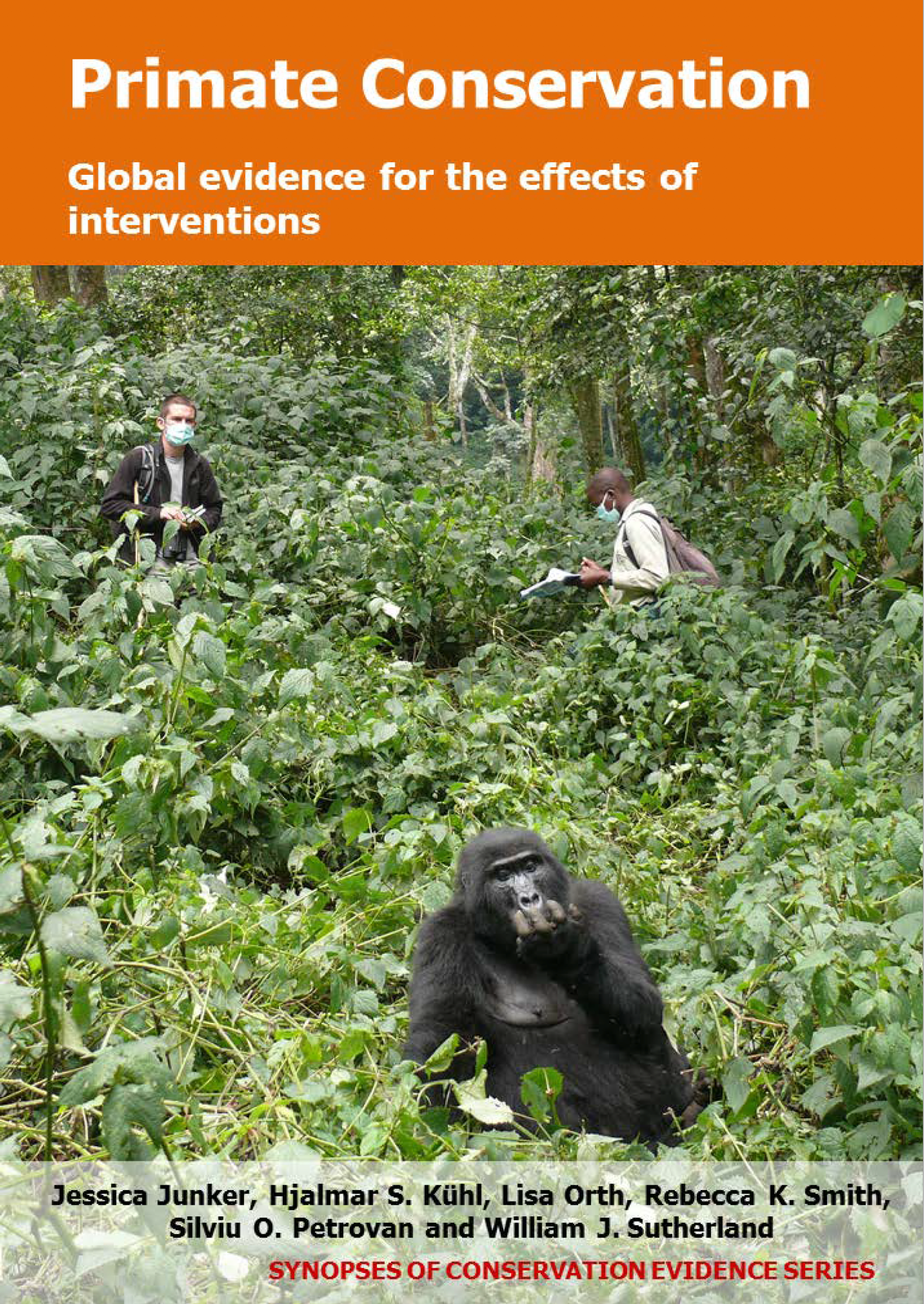Educate local communities about primates and sustainable use
-
Overall effectiveness category Unknown effectiveness (limited evidence)
-
Number of studies: 1
View assessment score
Hide assessment score
How is the evidence assessed?
-
Effectiveness
50% -
Certainty
0% -
Harms
0%
Study locations
Supporting evidence from individual studies
A before-and-after study in 1971-2002 in tropical montane forest in Bakossiland, Cameroon found that after the implementation of an education programme by the International Council for Bird Preservation (ICBP) in 1992 alongside one other intervention, drills Mandrillus leucophaeus increased in population size by 1997. However, the authors did not provide information on the magnitude of the population increase. Drill group sizes did not change over time, season, habitat, or elevation. In addition, a drill hunting ban was initiated by Bakossi traditional chiefs in 1994. In 1997, a group of 400 drills was observed and since the year 2000, wildlife staff and villagers regularly reported direct drill observations in the area. Independent direct observations of drill groups and their size were recorded by different organizations working in the area. No data were provided on the impact of the education campaign on the species’ conservation. The study does not distinguish between the effects of the different interventions mentioned above.
Study and other actions tested
Where has this evidence come from?
List of journals searched by synopsis
All the journals searched for all synopses
This Action forms part of the Action Synopsis:
Primate Conservation
Primate Conservation - Published 2017
Primate Synopsis





)_2023.JPG)














